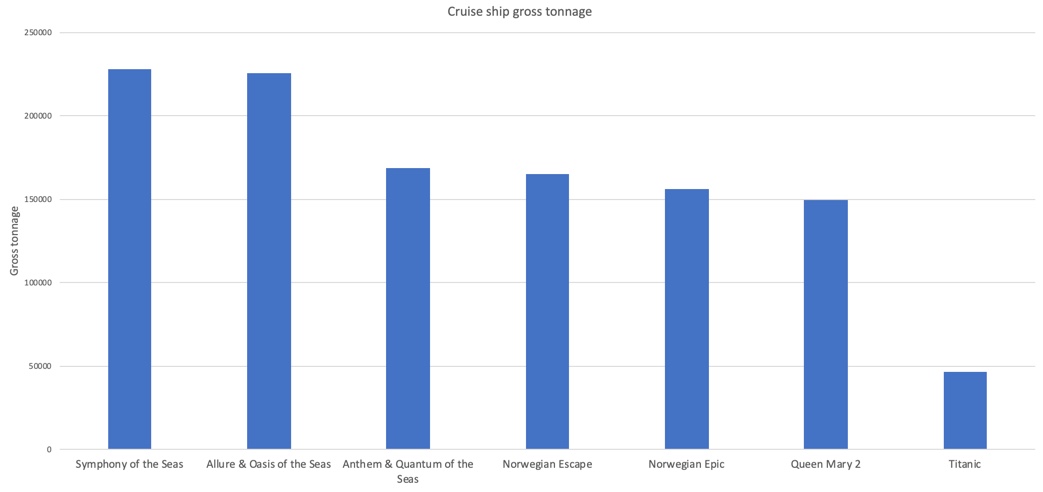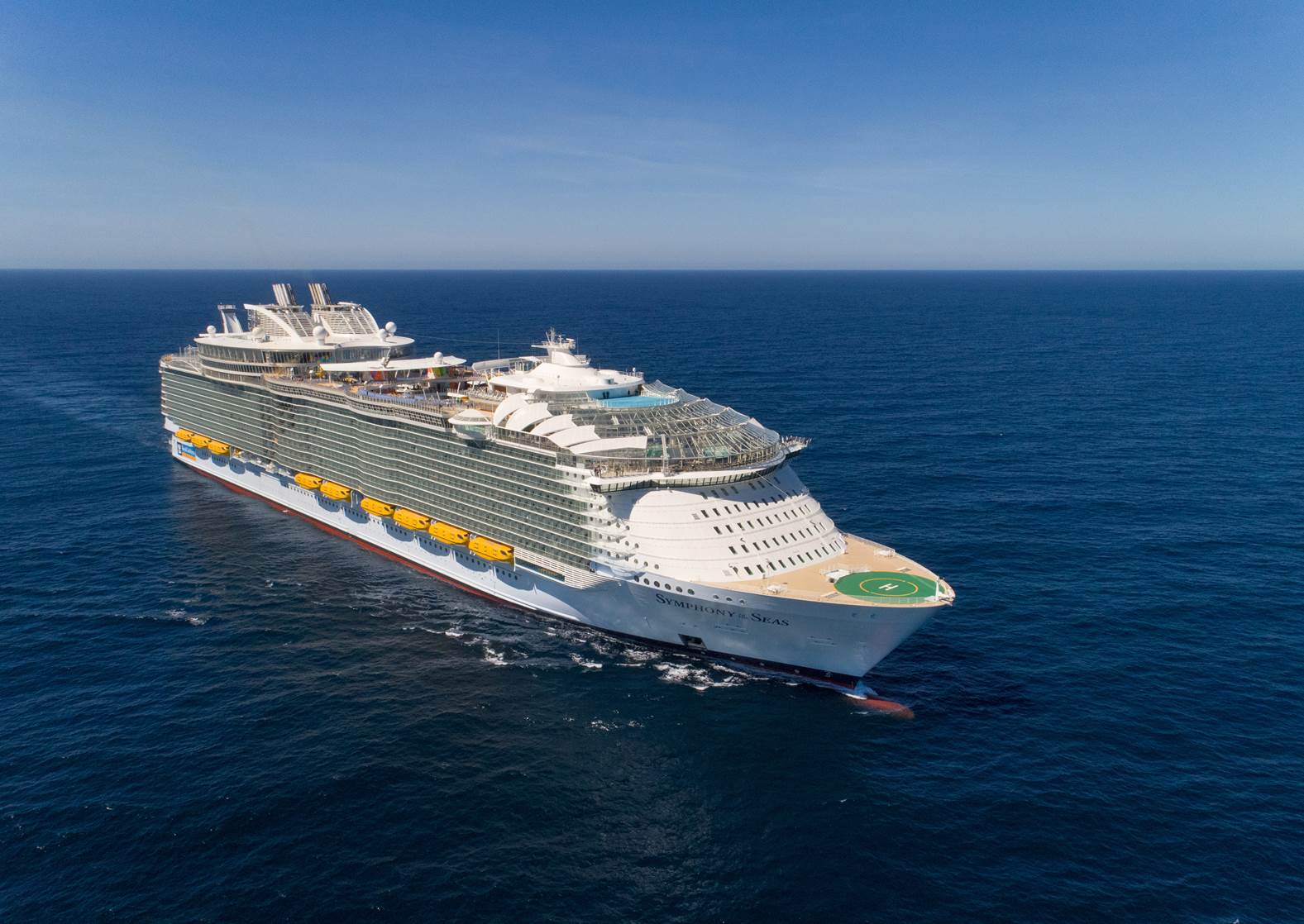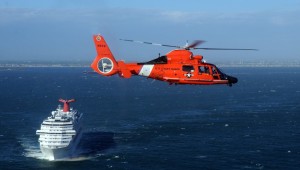It’s truly amazing to witness a cruise ship for the first time. As the floating palace gracefully draws closer, we get a glimpse of the sheer size and beauty of the ship. With some cruise ships towering over twenty stories high and spanning the length of four football fields, they are indeed a marvel of modern engineering beyond the scope of what most of us can fully understand. Cruise ships are incredibly heavy yet perfectly buoyant, providing maximum efficiency when cutting through ocean swells. So how much do cruise ships weigh and how do they stay afloat?
A Quick Weigh In on Terms
Before we delve into how much cruise ships weigh, let’s clarify a few things that make some terminology confusing. The weight of a ship is most easily ascertained using the theory of displacement. That is, the amount of water a ship must displace in order to stay afloat. Water is heavy and fills all corners of any container, whereas a cruise ship has plenty of open space. A cruise ship is long, wide and deep, resulting in ample floatation through water displacement in the surrounding ocean.
However, when we talk about the weight of cruise ships, we aren’t referring to how heavy they are. Instead of their actual weight, we’re measuring their volume or tonnage. Here, we’ll be focusing on Gross Registered Tonnage (GRT) of cruise ships. This represents the total internal volume of ships including cargo spaces, engine rooms, and crew quarters.
How Much Do the Largest Cruise Ships Weigh
Although all major cruise lines have large ships, some companies specialise in the mega-ship marketplace made popular due in part to increased family cruising. Most notably, Royal Caribbean International has the four largest and heaviest cruise ships in the world. Norwegian Cruise Line follows closely behind with its own unique brand of mega-ships. Here are some details regarding the largest cruise ships.

New and older cruise ships
Symphony of the Seas: Royal Caribbean. As of 2022, this cruise ship is the second largest passenger ship in the world by gross registered tonnage. At 228,081 GRT, it is only a few tonnes lighter than Wonder of the Seas. This massive beauty can cruise at 22 knots, carrying up to 5,518 guests and 2,200 crew members.
Allure of the Seas: Royal Caribbean. Launched in late 2010, Allure of the Seas has a gross tonnage of 225,282 and a passenger capacity of 5,484 at double occupancy. Like the Symphony, it has a total of 18 decks and a cruise speed of 22 knots.
Oasis of the Seas: Royal Caribbean. The older sister ship of Allure, Oasis of the Seas was launched in 2009. It weighs 226,838 tonnes and can carry 5,602 guests and 2,109 ship crew.
Anthem of the Seas: Royal Caribbean. This new vessel in the Royal Caribbean Quantum class is a slight step back in size yet is full of innovations. Anthem weighs 168,666 tonnes and hosts up to 4,180 passengers.
Quantum of the Seas: Royal Caribbean. Another signature ship for Royal Caribbean, Quantum of the Seas heralded a new look and style. Launched in 2014, Quantum weighs 168,666 tonnes and welcomes up to 4,180 passengers. With 16 decks and a 22-knot cruise speed, it’s pretty much Anthem’s twin ship.
Norwegian Escape: Norwegian Cruise Line. Launched in 2015, this vessel introduced us to the new Norwegian Breakaway Plus Class ship. The cruise line’s biggest mega-ship to date, Norwegian Escape is 164,998 tonnes and caters to 4,266 passengers at full double occupancy capacity.
Norwegian Epic: Norwegian Cruise Line. This vessel, launched in 2010, weighs 155,873 tonnes, with a passenger capacity of 4,100 at double occupancy. With other cruise ships with the same epic proportions, Norwegian Cruise Line is definitely among the mega-ship pioneers.
A ship that can host 4,000 or more passengers is mind-boggling for most of us. And don’t forget the ship’s crew of another 2,000 people. That’s around 6,000 people, adding further weight to the vessel. Fortunately, the very best expertise and technology is utilised in modern cruise ship design, with superior floatation, performance and economy.
A comparison between the above-mentioned vessels and more commonly known ships helps give some indication of their size. It also shows us how massive cruise ships have become since the first cruise ship was launched in 1901. The Queen Mary 2, for instance, was once one of the heaviest cruise ships at 149,215 tonnes. But it weighs around 40 percent less than Allure of the Seas. The tragic RMS Titanic, which sank in 1912, was also considered massive then. However, weighing only 46,328 tonnes, it is just around one quarter the weight of Allure of the Seas.
Cruise Ship Draught
Although only a small percentage of a cruise ship sits below the water, they are built very wide, allowing them to counter ocean swells and waves with ease. Even the largest cruise ships will sit less than 10 meters below the water surface, with the majority of the vessel visible above water level. The result is that larger ships ride the ocean swells better than smaller vessels, a benefit that has not gone unnoticed by cruise ship operators.
Mega-ships are the latest wave in the cruise industry and their popularity is undeniable. The size of a floating city with entertainments and attractions at every turn, it’s no wonder that entire families are joining the cruising revolution. Cruise ships are now being designed with all passenger styles and groups in mind, with shipboard ‘neighbourhoods’, kids’ clubs, and adults-only retreats springing up all over the place.
Although large in scale, cruise ship design is also geared toward provision of personal space and privacy. Open public areas are social and casual places, yet there are many nooks and corners to get away from it all as well. Intimate environments, piano bars, clubs and Wi-Fi all provide opportunities to be yourself while onboard.
It won’t be long before you get used to the pampering – the carefree cruise lifestyle becomes second nature and the cruise ship becomes your second home.




